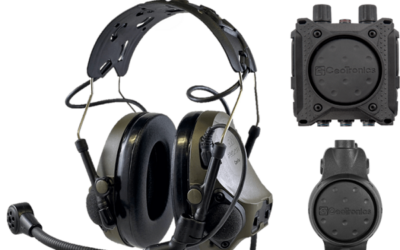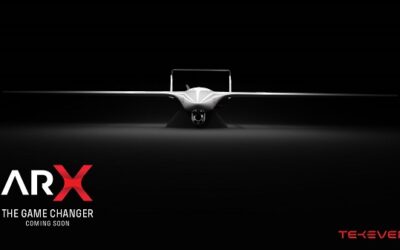Defence for and from Australia
With 25% of defence spending earmarked for Australian maritime and Anti-Submarine Warefare (ASW) capabilities, another 25% for key enablers including basing, logistics, IT and training systems, 18% to land combat and amphibious warfare, 17% to strike and air combat and, finally, 6% to air and sea lift, Mönch looks at Defence for and from Australia. This is an article excerpt. The full version can be found in MILITARY TECHNOLOGY #2/2017, available at Avalon 2017.
It is roughly a year since the Australian government published its latest defence white paper, which looks ahead to 2035, promising to invest A$195 billion over the next decade and to increase defence spending to 2% of GDP by 2020-21. The goal is a more capable, agile and potent force structure. Investment over the 10 years to 2025-26 is divided among six capability streams.
Extending over 10 million square kilometres, Australia’s exclusive economic zone is one of the largest in the world, while its SAR area covers 53 million square kilometres. Its maritime forces deploy around the world for training, exercises and to participate in coalition operations. The government is pursuing more potent maritime capabilities through the acquisition of new submarines, surface ships and both manned and unmanned aircraft.
Under the SEA 1000 programme, new submarines are the subject of the single largest defence procurement ever undertaken by Australia; they will double the fleet size to 12 for a projected cost of A$50 billion (U$38.4 billion). On 26 April 2016, the government announced its choice of DCNS to supply the boats, which will be based on the nuclear BARRACUDA design but with non-nuclear propulsion, beating Germany’s TKMS and the Japanese.
The surface fleet is expected to be capable of independent operations, supporting international coalitions and contributing to SAR, border security, humanitarian and disaster relief missions.
Twelve combatants will form the core of the new capability and will include the three Sea 4000 HOBART-class Air Warfare Destroyers (AWD) expected to enter service in the early 2020s and nine Sea 5000 future anti-submarine frigates. They are to replace the ANZAC-class from the late 2020s, with construction set to get under way at the beginning of the decade.
Large manned aircraft, UAVs and multi-role helicopters are being procured. The most capable will be the Boeing P8A POSEIDON MPA. The first of 12 under contract arrived in Australia on 16 November 2016, with the remaining 11 to be delivered by March 2020. Deliveries will overlap the phasing-out of the P3C fleet and a final three are due later in the decade.
Seven Northrop Grumman MQ-4C TRITONs, maritime variants of the GLOBAL HAWK HALE UAV, will support the POSEIDONs from the early 2020s as part of the ISR capability stream. Unarmed, the TRITONs will provide persistent maritime patrol and other ISR capabilities.
Australia also plans to add short range tactical UAVs to boost surface vessel situational awareness. The RAN has conducted extensive trials with the fixed-wing Insitu ScanEagle with the Sentient ViDAR optical detection system, and in April 2016 issued a request for tender for a shipboard VTOL UAV. UMS Skeldar‘s SKELDAR and Schiebel‘s CAMCOPTER are potential candidates.
The RAN is now inducting a new fleet of 24 Lockheed Martin Sikorsky MH-60R helicopters. Operating from the frigates and destroyers, they will primarily support ASW and Anti-Surface Warfare (AsuW) missions. The last of the new MH-60Rs was handed over on 16 September 2016. Other helicopters the Navy will employ include the Airbus/Leonardo MRH90 TAIPAN utility platform, which operates in cooperation with the Army in amphibious warfare. It remains one of the DoD’s projects of concern as the availability rate was around 50% as late as November, although a detachment of seven helicopters achieved 70% and 500 flying hours during a two-month period on Operation “Fiji Assist” following Tropical Cyclone Winston. The 38th machine of 47 ordered was delivered in September, with the final delivery expected in mid-2017.
The only capability stream to match maritime and ASW in terms of spending is that of the key enablers, which include critical infrastructure such as bases, training ranges, ports and airfields, information and communications technology (ICT), logistics, science and technology and health services. Cuts in the funding for these over recent years, says the government, are to be reversed.
Next, in terms of the investment funding it will absorb, comes the land combat and amphibious warfare stream, which is to benefit from significant investment in new combat vehicles, long-range fire support and SOF.
Soldier equipment will be an important focus and will cover weapons and targeting devices, communications, body armour and other protective gear including NBC kit and night-fighting equipment under Land 125.
New general purpose vehicles and Protected Mobility Vehicles (PMVs) are also on the shopping list, including 1,100 examples of the Thales HAWKEI, designed and built in Australia. The helicopter-transportable HAWKEI is armoured and is to feature advanced communication systems. Delivery of the first vehicles of an initial production run of 10 of the 4×4 vehicles was announced on 16 November 2016, with full rate production due to begin in 2018.
Plans also call for the replacement of the Thales BUSHMASTER PMV from the middle of the next decade. Meanwhile, Thales Australia was awarded a A$11.2 million contract to upgrade the Protected Weapon System.
Armed medium altitude UAVs are to be introduced in the early 2020s. They are intended to provide ISR and fire support to a wide variety of missions. Likely candidates include variants of the MQ-1 PREDATOR and MQ-9 REAPER from General Atomics Aeronautical Systems, Inc., (GA-ASI) and the HERON RPA from Israel Aerospace Industries (IAI).
The threat of early replacement hangs over the fleet of 22 Airbus TIGER Armed Reconnaissance Helicopters (ARH), for which final operational capability was announced on 14 April 2016, seven years late, following service entry in 2004. This also came with nine operational caveats and 76 capability deficiencies, 60 of them deemed critical, according to a report by the Australian National Audit Office (ANAO) published on 1 September. Lack of availability was a major issue, with on average only 3.5 of the operational fleet of 16 aircraft serviceable at 10am on any given day in 2015, against a target of 12. While the White Paper announced that the TIGERs are to be replaced from the mid-2020s with a new armed aerial reconnaissance capability, the ANAO noted that the final form of the ARH Capability Assurance Program – whether to upgrade or replace the TIGER – established in January 2014 as project Air 9000 has not been finalised.
Next comes the strike and air combat capability stream, which will build up from the foundations provided by the most modern aircraft in the current inventory that include the 24 Boeing F/A-18F Super HORNETs, six Boeing E-7A WEDGETAIL AEW&C aircraft, and five KC-30A tankers.
Beginning in 2018, these aircraft will be joined by 12 Boeing EA-18G GROWLER electronic attack aircraft, and then from 2020 by the first of the 72 Lockheed Martin F-35A LIGHTNING IIs, which will replace the ageing F/A-18A/B HORNETs. The F-35A is the land-based, conventional take-off and landing version of the LIGHTNING II.
IOC for Australia’s F-35A was deferred from 2018 to 2020 following the 2010 re-baselining of the entire programme. With such risks in mind the Australian Senate’s Foreign Affairs, Defence and Trade References Committee, reporting on the programme in October 2016, recommended that the DoD develop a hedging strategy to reduce the risk of a capability gap causing further delays. This strategy should be complete by 2018 and capable of implementation by 2019 at the latest, said the committee.
Two more KC-30As are to be introduced by the end of the decade to support air combat and strike aircraft, while the acquisition of two more to support the POSEIDON MPAs will also be considered, expanding the tanker fleet to nine.
To protect deployed forces, short-range Ground Based Air Defence (GBAD) missiles are desired to replace the current Saab RBS-70 system, with service entry in the early 2020s anticipated. However, on 15 August 2016, Saab announced the signature of a contract worth some A$32.5 million to upgrade Australia’s RBS-70 system and the associated GIRAFFE AMB radar with Mode 5 IFF functionality. This, says the company, will support the country’s GBAD capabilities in a joint and coalition environment out beyond 2030, which should make the latest RBS-70 NG a strong candidate.
Plans call for the acquisition of a medium range system later in the decade to improve protection of critical facilities including deployed air bases and command centres.
The core of the airlift fleet is eight Boeing C-17As, with more to be acquired, supported by 12 upgraded Lockheed Martin C-130J HERCULES, 10 Leonardo C-27J SPARTANs, and 13 Boeing CH-47F CHINOOK helicopters, the last three of which the Army received ahead of schedule in June. The RAAF has four of the 10 SPARTANs on order and the achievement of IOC with the type was announced on 16 December.
This is an excerpt of Peter Donaldson’s article in MILITARY TECHNOLOGY #2/2017. The full version can be found in MILITARY TECHNOLOGY #2/2017, available at Avalon 2017.

























